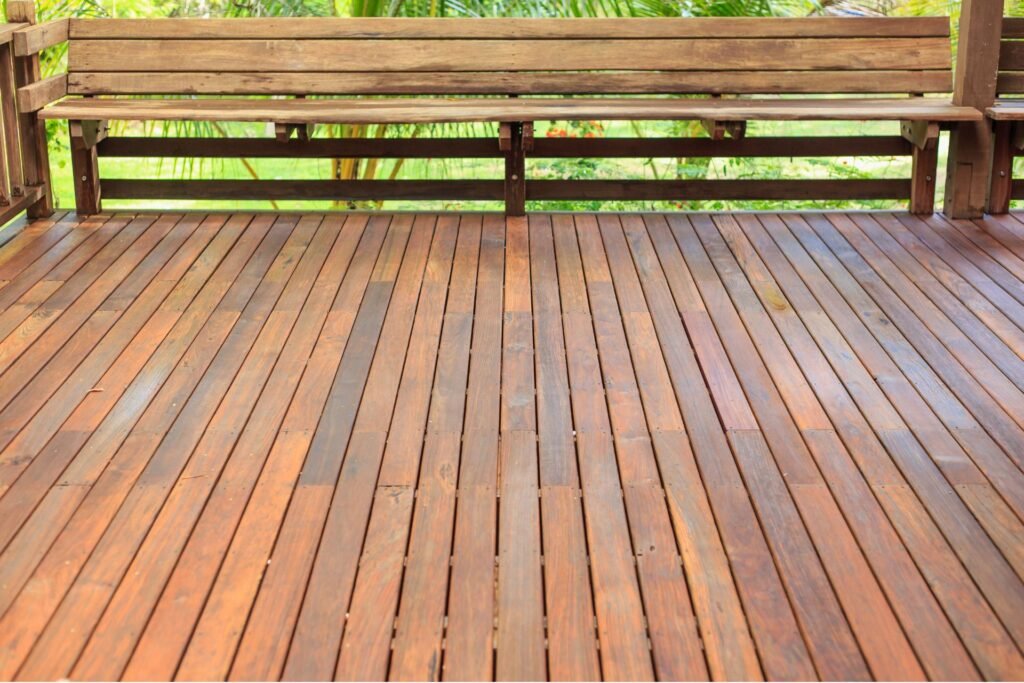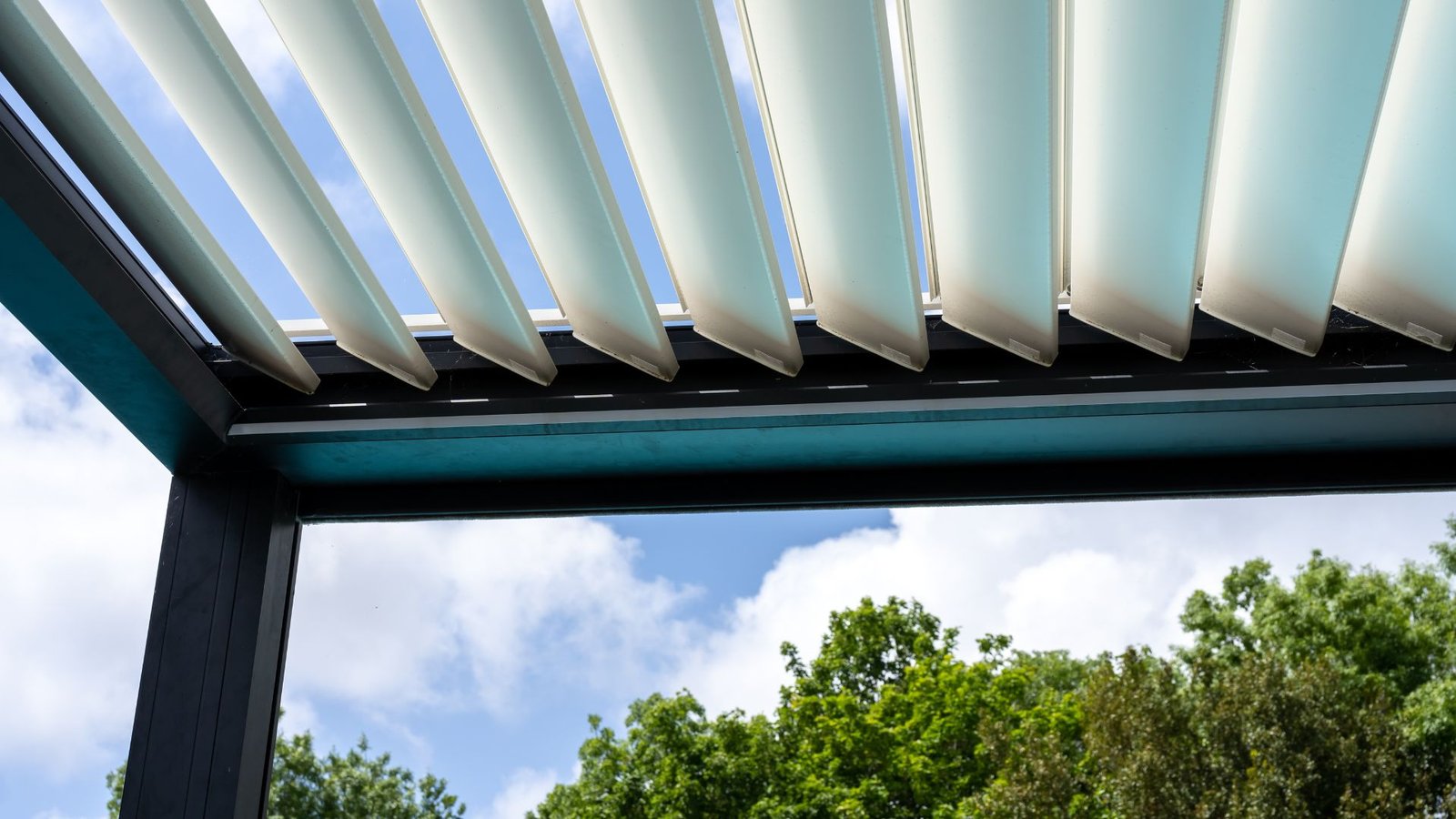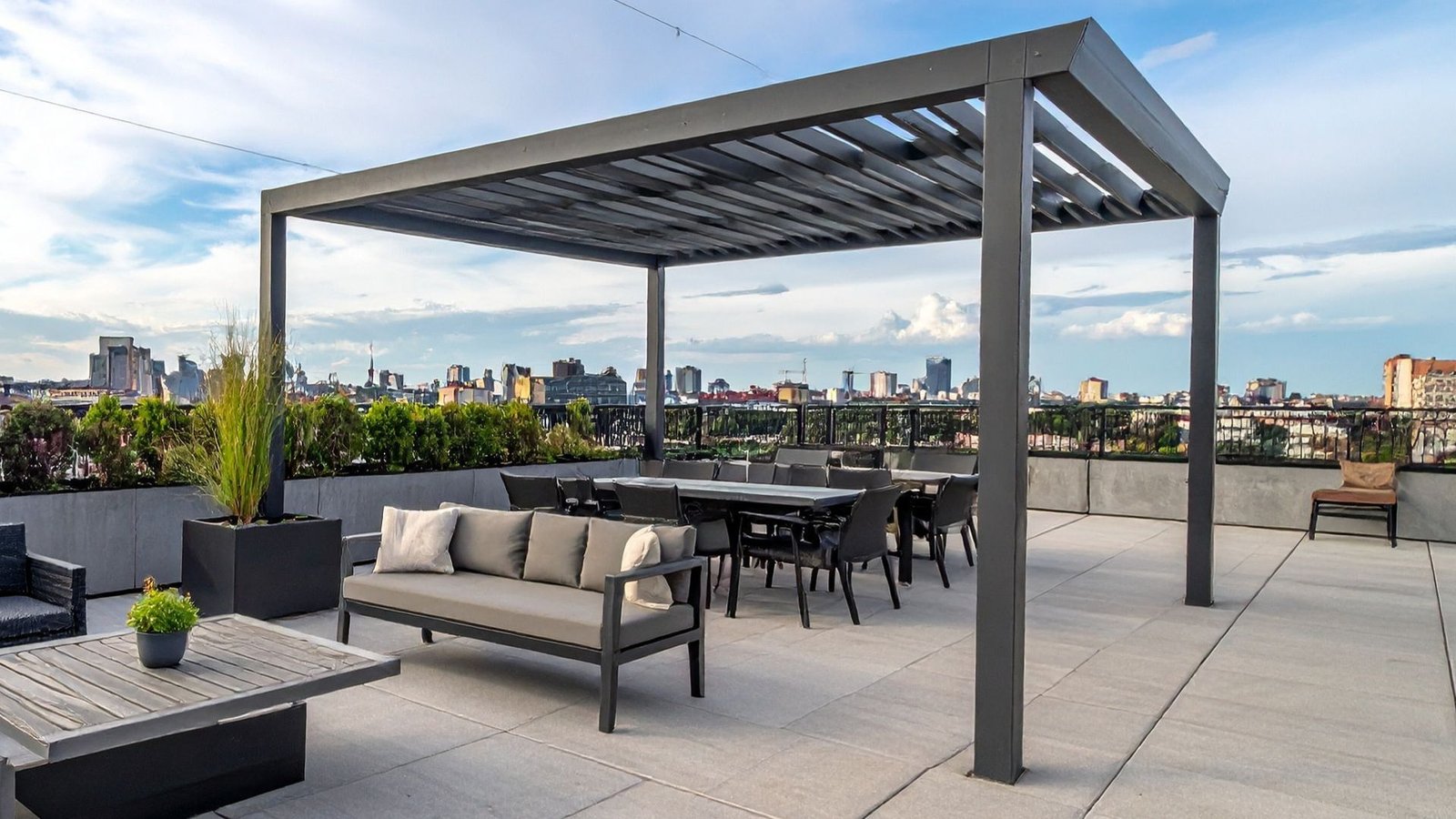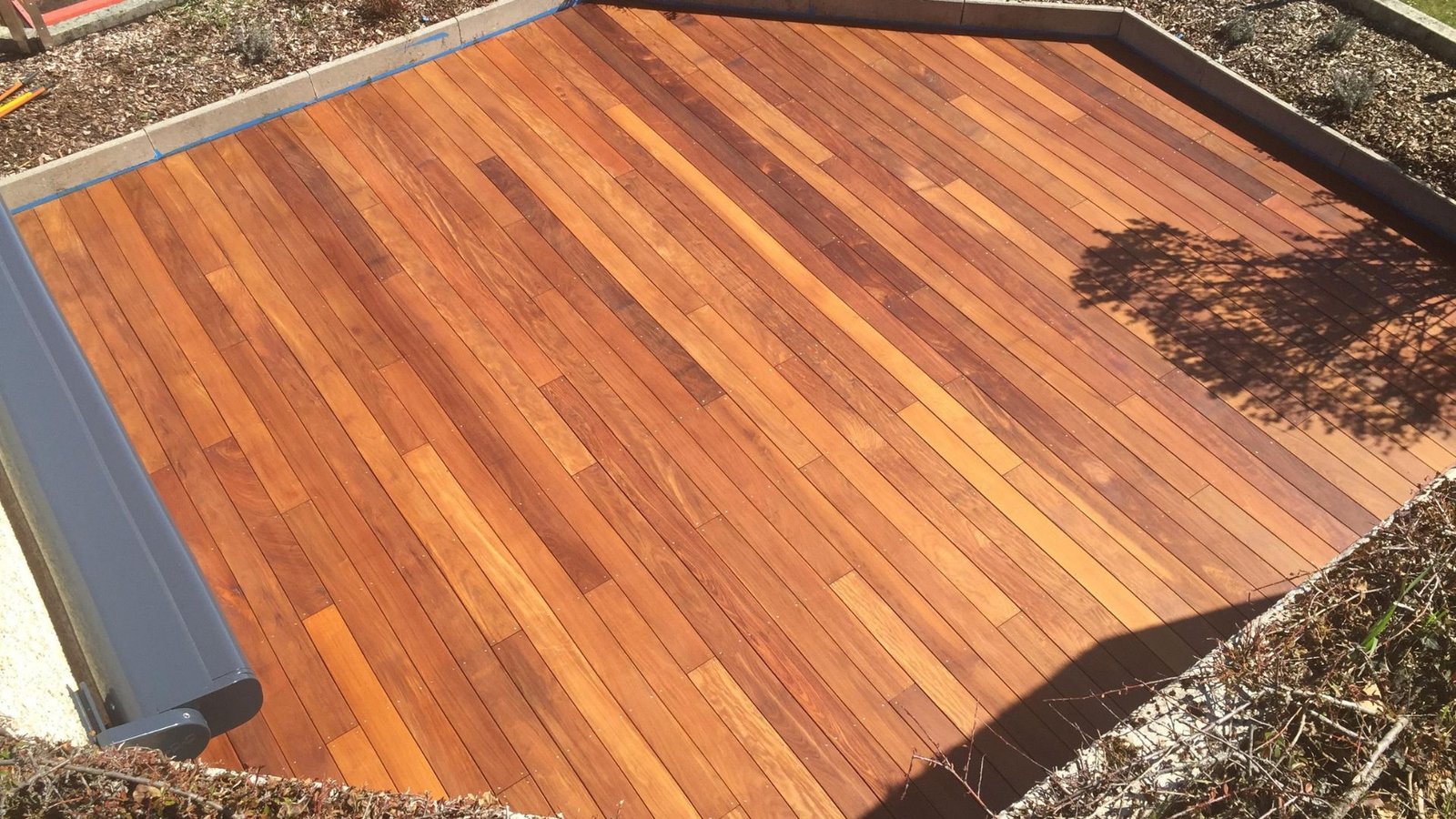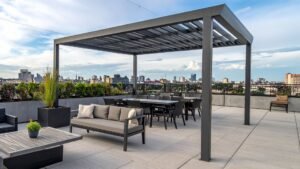Welcome to our comprehensive guide on understanding deck costs in New Zealand. Whether you’re considering adding a beautiful outdoor space to your home or simply curious about the expenses involved, this guide is here to help. We’ll delve into the various factors that influence deck costs, from the choice of materials and design complexity to regional variations and additional expenses like permits and maintenance. By the end of this article, you’ll have a clear understanding of what to expect when budgeting for a deck, enabling you to make informed decisions that suit your needs and financial situation. Let’s explore everything you need to know to create your perfect deck in New Zealand.
On average, the cost of building a deck in New Zealand ranges from $300 to $600 per square meter for timber decking, $350 to $700 per square meter for composite decking, and $400 to $800 per square meter for PVC decking. These costs vary based on factors such as materials, size, design complexity, and location. Additional expenses may include permits, accessories, and maintenance. Proper planning and budgeting are essential to creating your ideal outdoor space.
Table of Contents
Factors Influencing Deck Costs
When planning to build a deck, understanding the various factors that influence the overall cost is crucial. The cost of a deck can vary significantly based on several key elements, each contributing to the final price. Here’s a detailed breakdown:
Materials Used
The choice of materials is one of the most significant factors affecting the cost of building a deck. Different materials offer varying levels of durability, aesthetics, and maintenance requirements, which in turn influence their price.
- Timber: Timber is a popular choice due to its natural beauty and classic appeal. Types of timber like pine, cedar, and kwila are commonly used. Pine is the most affordable but requires regular maintenance to prevent rot and insect damage. Cedar and kwila are more durable and resistant to weathering but come at a higher cost.
- Composite: Composite decking is made from a mixture of wood fibers and plastic. It is known for its durability and low maintenance, as it doesn’t require staining or sealing. Composite decks are more expensive upfront compared to timber, but the long-term savings on maintenance can be significant.
- PVC: PVC decking is entirely synthetic, offering excellent resistance to moisture, insects, and rot. It’s highly durable and requires minimal maintenance. However, it tends to be the most expensive option among the three, making it a choice for those prioritizing longevity and ease of upkeep.
- Cost Comparison: Generally, timber decks are the least expensive initially, followed by composite, with PVC being the most costly. However, considering long-term maintenance costs, composite and PVC might offer better value for money over time.
Deck Size and Design
The size and design of your deck play a pivotal role in determining the overall cost. Larger decks require more materials and labour, thus increasing the cost.
- Size: The larger the deck, the higher the cost. This is because larger decks need more materials, such as decking boards, fasteners, and support structures. Additionally, a larger deck takes more time to construct, increasing labour costs.
- Design Complexity: Simple, rectangular decks are more affordable to build compared to complex designs with multiple levels, custom shapes, or intricate patterns. Features like built-in seating, planters, or pergolas add to the complexity and cost. Complex designs often require skilled labour, which can drive up the price.
Location and Site Preparation
The location of your property and the condition of the site where the deck will be built are important considerations that affect the cost.
- Site Preparation: Preparing the site can involve leveling the ground, clearing vegetation, or even removing old structures. These tasks can be labor-intensive and costly, especially if heavy machinery is needed.
- Regional Variations: Costs can vary significantly within New Zealand based on regional differences. Urban areas might have higher labor costs compared to rural areas. Additionally, material costs can vary depending on availability and transportation expenses.
Labor Costs
Labor is a substantial part of the total cost when building a deck. Understanding the factors that influence labor costs can help in budgeting effectively.
- Overview of Labour Costs: Labour costs can vary based on the complexity of the project and the skill level of the workers. Professional builders with experience in deck construction typically charge higher rates but ensure quality workmanship.
- DIY vs. Hiring Professionals: Opting for a DIY approach can save money on labour, but it requires time, effort, and a certain level of skill. DIY projects might also come with hidden costs such as tools and potential mistakes. Hiring professionals ensures the job is done correctly and can save time and stress. However, it comes at a higher upfront cost.
- Pros and Cons: DIY can be cost-effective for those with the necessary skills and time, while hiring professionals guarantees quality and can be more efficient, albeit at a higher price.
By understanding these factors, you can make informed decisions that align with your budget and project goals. Whether you opt for timber, composite, or PVC, and whether you choose to DIY or hire professionals, considering these elements will help you achieve the best results for your deck construction project.
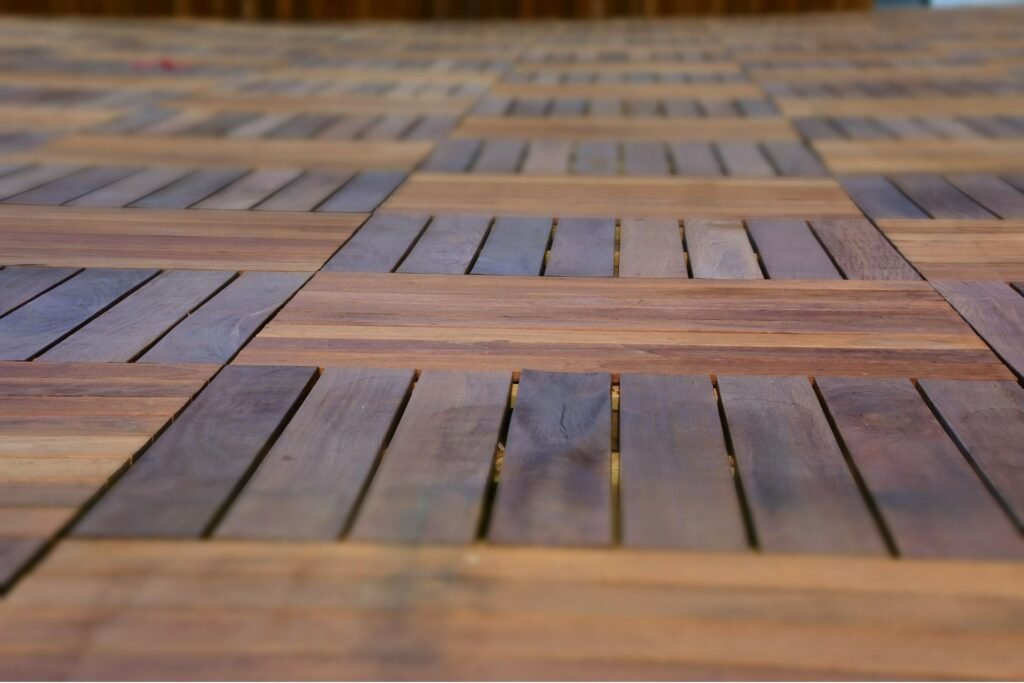
Breakdown Of Decking Material Costs
Choosing the right decking material is a crucial step in your outdoor project. To help you make an informed decision, let’s break down the costs and benefits of the most popular decking materials: timber, composite, and PVC.
Timber Decking
Types of Timber Commonly Used
Timber decking remains a favorite due to its natural appearance and versatility. Here are the most commonly used types:
- Pine: Affordable and widely available, treated pine is a popular choice for budget-conscious homeowners.
- Kwila: Known for its durability and rich color, Kwila is a premium hardwood that can withstand harsh weather conditions.
- Macrocarpa: This softwood offers a unique grain pattern and is naturally resistant to decay, making it an excellent choice for those seeking something different.
Price Range per Square Meter
- Pine: $50 – $100 per square meter
- Kwila: $150 – $250 per square meter
- Macrocarpa: $100 – $200 per square meter
Pros and Cons of Timber Decking
Pros:
- Natural aesthetic that blends well with outdoor environments.
- Can be stained or painted to suit your preferences.
- Generally more affordable upfront.
Cons:
- Requires regular maintenance such as staining and sealing to prevent rot and decay.
- Can be prone to splintering and warping over time.
- Not as resistant to pests and moisture compared to other materials.
Composite Decking
What is Composite Decking?
Composite decking is made from a blend of wood fibers and recycled plastic. This material mimics the appearance of wood but offers enhanced durability and minimal maintenance.
Price Range per Square Meter
- $120 – $250 per square meter
Pros and Cons of Composite Decking
Pros:
- Low maintenance; no need for staining or sealing.
- Resistant to splintering, warping, and pest damage.
- Environmentally friendly, often made from recycled materials.
Cons:
- Higher upfront cost compared to some timber options.
- Can become hot under direct sunlight.
- Limited color options compared to timber that can be painted or stained.
PVC Decking
Overview of PVC Decking
PVC decking is entirely made of polyvinyl chloride, a type of plastic. It’s designed to be extremely durable and is often chosen for its longevity and low maintenance requirements.
Price Range per Square Meter
- $150 – $300 per square meter
Pros and Cons of PVC Decking
Pros:
- Virtually maintenance-free; doesn’t require painting, staining, or sealing.
- Highly resistant to moisture, mold, and mildew.
- Lightweight and easy to install.
Cons:
- Higher cost compared to other decking materials.
- Can have a plastic-like appearance, which might not appeal to everyone.
- Limited in color and texture options compared to natural wood.
When choosing decking materials, consider not just the initial cost but also the long-term maintenance and durability. Timber offers a classic look with a range of options to fit various budgets, while composite and PVC provide low-maintenance alternatives that can save time and money in the long run. Ultimately, the best choice will depend on your specific needs, budget, and aesthetic preferences.
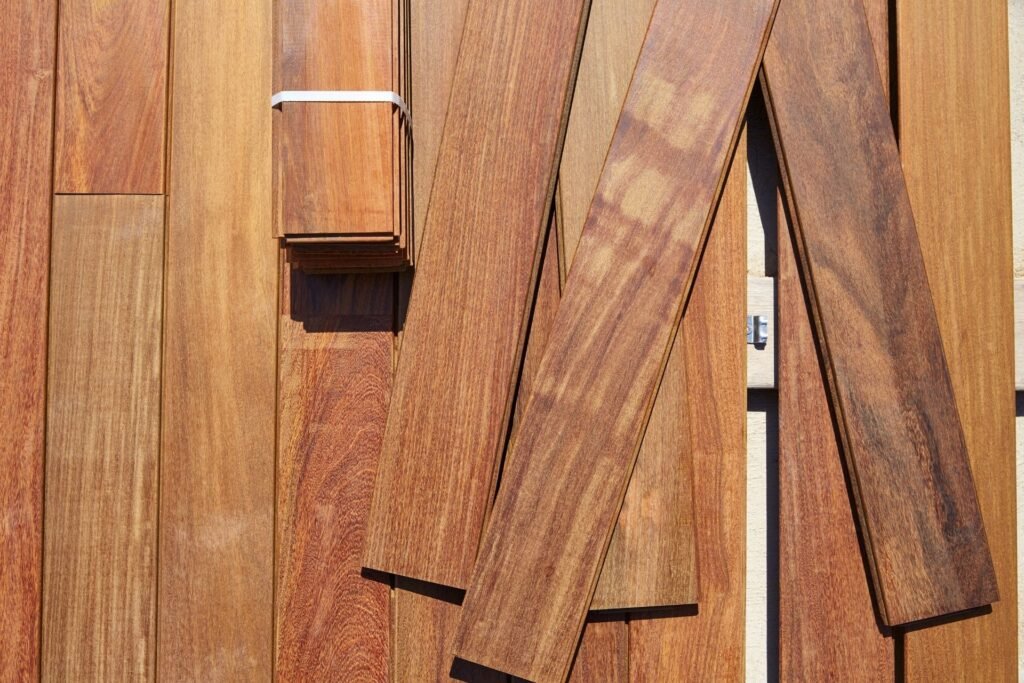
Additional Costs To Consider
When planning a deck project, it’s crucial to factor in various additional costs beyond the basic materials and labor. These extra expenses can significantly impact your overall budget and must be considered to avoid any surprises down the line.
Permits and Regulations
Building a deck often requires obtaining specific permits to ensure that your construction meets local building codes and regulations. The type of permits needed can vary depending on your location and the complexity of your deck project. Generally, you’ll need a building permit, and in some cases, additional permits for electrical or plumbing work if your deck includes lighting or water features.
The cost of obtaining these permits can vary widely. On average, homeowners can expect to spend anywhere from $100 to $500 on permits. However, in some regions, the costs can be higher, especially if your project is large or particularly complex. It’s a good idea to check with your local building department to get an accurate estimate of the permit fees in your area. Ensuring you have all the necessary permits not only helps you avoid potential fines but also ensures that your deck is safe and up to code.
Deck Accessories
Adding accessories to your deck can enhance its functionality and aesthetic appeal, but these extras come at an additional cost. Common deck accessories include railings, steps, and lighting.
- Railings: Essential for safety, especially for elevated decks, railings can cost between $20 to $60 per linear foot, depending on the material and design.
- Steps: If your deck is raised, you’ll need steps or stairs. The cost of adding steps can range from $100 to $300 per step, based on the material and complexity of the design.
- Lighting: Adding lighting to your deck can create a beautiful ambiance and improve safety. The cost for deck lighting varies, with basic solar lights starting around $20 each, while more elaborate wired lighting systems can cost several hundred dollars.
When planning your deck, consider these accessory costs to ensure your budget accommodates the features you desire.
Maintenance and Upkeep
The long-term costs associated with maintaining a deck are an important consideration that many homeowners overlook. Different types of decking materials have varying maintenance requirements and associated costs.
- Wood Decking: Traditional wood decks, while beautiful, require regular maintenance to prevent rot, warping, and insect damage. This includes annual cleaning, staining, and sealing, which can cost between $300 to $600 per year.
- Composite Decking: Although more expensive initially, composite decking requires less maintenance than wood. You’ll still need to clean it periodically, but there’s no need for staining or sealing. Annual maintenance costs for composite decks are typically lower, averaging around $100 to $200.
- PVC Decking: PVC or vinyl decks are the most maintenance-free option. They require minimal upkeep beyond occasional cleaning, with annual maintenance costs usually under $100.
By considering the long-term maintenance costs of your chosen decking material, you can make a more informed decision that fits your lifestyle and budget.
In summary, while planning your deck, it’s essential to account for these additional costs. Understanding permit requirements, accessory expenses, and long-term maintenance can help you create a realistic budget and ensure your deck project is both beautiful and functional for years to come.
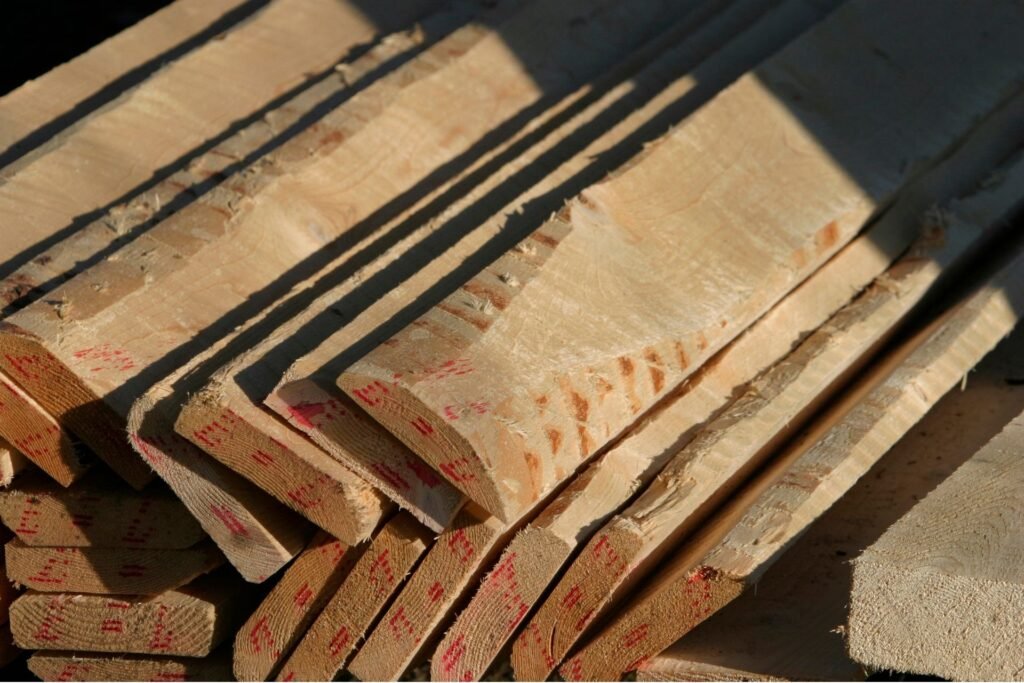
Cost Estimation Examples
When planning a deck project, understanding the cost is crucial for budgeting and decision-making. Here, we’ll provide detailed cost estimation examples for three types of decks: a basic timber deck, a mid-range composite deck, and a high-end custom deck. These examples will help you gauge what to expect and make an informed choice based on your budget and preferences.
Basic Timber Deck
Building a basic timber deck is often the most economical option and is perfect for homeowners looking for a straightforward, functional outdoor space. Here’s a cost breakdown for a small, basic timber deck:
- Materials: The primary cost in a basic timber deck is the wood itself. Pine or hardwood are common choices, with pine being the cheaper option. For a small deck of about 10 square meters, expect to spend around NZD 1,000 to NZD 1,500 on timber.
- Labor: Hiring a professional to build your deck will ensure quality and compliance with local building codes. Labor costs can vary, but typically range from NZD 50 to NZD 80 per hour. For a small deck, the labor might cost between NZD 800 to NZD 1,200.
- Additional Materials: You’ll need fasteners, concrete for the posts, and possibly a protective stain or sealant for the wood. These materials can add another NZD 200 to NZD 300 to your total cost.
- Total Estimated Cost: Combining these factors, the total cost for a small, basic timber deck can range from NZD 2,000 to NZD 3,000.
Mid-Range Composite Deck
A mid-range composite deck offers a balance of durability, aesthetics, and cost. Composite materials are more expensive than timber but require less maintenance. Here’s a breakdown for a mid-range composite deck with some accessories:
- Materials: Composite decking can cost between NZD 200 to NZD 300 per square meter. For a medium-sized deck of 20 square meters, the materials can range from NZD 4,000 to NZD 6,000.
- Labor: Given the complexity and precision required for composite decking, labor costs may be slightly higher. Expect to pay between NZD 1,500 to NZD 2,500 for professional installation.
- Accessories: Mid-range decks often include accessories like railings, built-in lighting, and possibly a few custom features. These can add an extra NZD 1,000 to NZD 2,000 to your budget.
- Total Estimated Cost: The total cost for a mid-range composite deck can range from NZD 6,500 to NZD 10,500, depending on the specific materials and accessories chosen.
High-End Custom Deck
A high-end custom deck is the pinnacle of outdoor luxury, offering top-tier materials, intricate designs, and extensive features. Here’s a breakdown for a large, custom-designed deck with high-end materials and features:
- Materials: High-end materials like premium hardwoods or specialized composite materials can cost upwards of NZD 500 per square meter. For a large deck of 30 square meters, material costs alone can range from NZD 15,000 to NZD 20,000.
- Labor: Custom decks require skilled craftsmanship and more time, leading to higher labor costs. You might pay between NZD 4,000 to NZD 6,000 for expert construction.
- Features and Customization: High-end decks often include custom railings, multi-level designs, built-in seating, planters, and advanced lighting systems. These features can add another NZD 5,000 to NZD 10,000.
- Total Estimated Cost: For a high-end custom deck, the total cost can range from NZD 24,000 to NZD 36,000, reflecting the premium nature of the project.
Estimating the cost of a deck involves considering various factors, including the type of materials, labor, and any additional features you want to include. By understanding these examples, you can better plan your budget and achieve the perfect outdoor space that meets your needs and preferences. Whether you opt for a basic timber deck, a mid-range composite deck, or a high-end custom design, each option provides unique benefits and considerations.
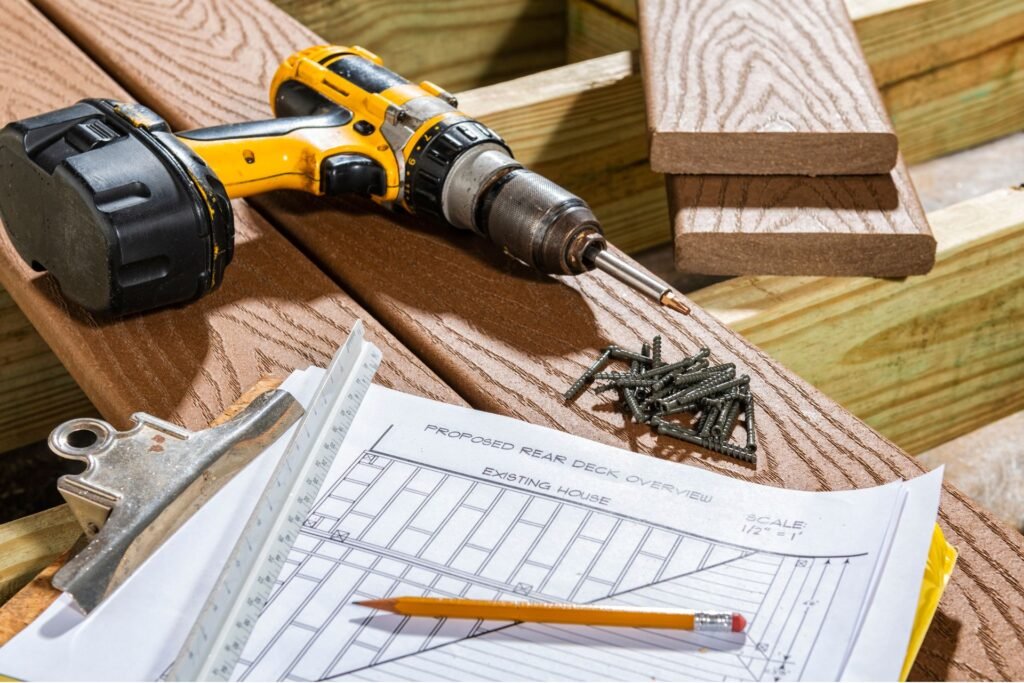
Ways To Save On Deck Costs
Building a deck is a fantastic way to enhance your outdoor living space, but it can be a significant investment. Luckily, there are several strategies you can employ to keep costs down without compromising on quality or aesthetics. Here are some effective ways to save on deck costs:
Choosing Cost-Effective Materials
One of the most impactful ways to save money on your deck is by selecting cost-effective materials. Here’s how you can do it:
- Opt for Pressure-Treated Lumber: This type of wood is treated to resist rot and insects, making it a durable and affordable choice. While it might not have the same luxurious appeal as exotic hardwoods, it can be stained or painted to achieve a high-end look.
- Consider Composite Decking: Although the upfront cost can be higher than wood, composite decking is low-maintenance and long-lasting, which can save you money in the long run on repairs and maintenance.
- Shop Around: Don’t settle for the first quote you receive. Compare prices from various suppliers and look for bulk purchase discounts.
DIY Options
Taking on a decking project yourself can significantly reduce labor costs. Here are some considerations for building the deck yourself:
- Assess Your Skills: Be honest about your DIY skills. Building a deck requires a solid understanding of carpentry and basic construction principles. If you have experience with similar projects, you might be able to handle it yourself.
- Use Online Resources: There are numerous online guides and videos that can help you through every step of the deck-building process. Websites like YouTube, DIY Network, and home improvement blogs offer detailed tutorials.
- Rent or Borrow Tools: Instead of buying expensive tools, consider renting them from a local hardware store or borrowing from friends or family.
Smart Design Choices
The design of your deck can greatly influence the overall cost. Here are some smart design choices to consider:
- Keep It Simple: Intricate designs and features like multiple levels, custom railings, and built-in seating can quickly drive up costs. A simpler design with clean lines can be both attractive and budget-friendly.
- Choose a Standard Shape: Rectangular or square decks are easier and cheaper to construct compared to more complex shapes.
- Plan for Future Additions: If you’re on a tight budget, you can build a basic deck now and add features like railings, stairs, or additional levels later.
Seasonal Discounts and Offers
Timing your purchase can also lead to significant savings. Here’s how to take advantage of seasonal sales and promotions:
- Shop During Off-Season: Decking materials often go on sale at the end of the summer season. This is a great time to buy materials at a reduced price.
- Look for Holiday Sales: Major holidays like Memorial Day, Fourth of July, and Labor Day often come with sales on home improvement materials.
- Check for Manufacturer Rebates: Some manufacturers offer rebates on bulk purchases or during promotional periods. Keep an eye out for these deals.
By implementing these strategies, you can build a beautiful, functional deck without breaking the bank. Whether you choose cost-effective materials, take on the project yourself, make smart design choices, or capitalize on seasonal discounts, there are plenty of ways to save money while achieving the deck of your dreams.

Hiring The Right Professionals
Finding Qualified Contractors
Choosing the right contractor can make or break your project. Here are some tips to help you select a qualified contractor:
1. Research Thoroughly: Start by researching contractors in your area. Look for those with strong reputations and significant experience in the type of project you are planning. Websites, local business directories, and word-of-mouth recommendations are great places to start.
2. Check Credentials: Ensure that the contractors you are considering are licensed and insured. This provides protection for both you and the contractor in case of accidents or issues during the project.
3. Interview Potential Contractors: Don’t hesitate to conduct interviews with potential contractors. This gives you an opportunity to discuss your project in detail and gauge their understanding and enthusiasm.
4. Ask for Detailed Proposals: Request detailed proposals that outline the scope of work, materials to be used, timelines, and costs. This will help you understand what to expect and compare offerings effectively.
5. Assess Communication Skills: Effective communication is key to a successful project. Choose a contractor who is responsive and communicates clearly and promptly.
6. Consider Their Work Style: Ensure their work style aligns with your expectations. For instance, some contractors may take a more hands-on approach, while others might rely heavily on subcontractors.
Comparing Quotes
Once you have a list of potential contractors, the next step is to compare quotes. Here’s how to do it effectively:
1. Get Multiple Quotes: Obtain at least three quotes to have a good basis for comparison. This helps you understand the average cost and identify any outliers.
2. Compare Apples to Apples: Ensure that each quote includes the same scope of work, materials, and timelines. If there are discrepancies, ask the contractors for clarifications.
3. Look Beyond the Price: The lowest quote is not always the best choice. Consider the quality of materials proposed, the contractor’s reputation, and their projected timeline.
4. Evaluate Payment Terms: Understand the payment terms outlined in each quote. Be wary of contractors who demand a large upfront payment. A reasonable deposit with progress payments tied to milestones is a better arrangement.
5. Ask About Contingencies: Inquire how each contractor handles unexpected issues or changes during the project. A well-detailed quote should include contingencies for unforeseen circumstances.
Checking References and Reviews
Checking references and reading reviews is a crucial step in hiring the right contractor. Here’s why it’s important and how to do it:
1. Importance of References and Reviews: References and reviews provide insights into a contractor’s reliability, quality of work, and professionalism. They can highlight potential red flags that you might not see in a contractor’s proposal.
2. Ask for References: Request a list of past clients from each contractor. Contact these clients and ask about their experience working with the contractor. Key questions include whether the project was completed on time, within budget, and to their satisfaction.
3. Read Online Reviews: Check online reviews on platforms like Google, Yelp, and industry-specific websites. Look for patterns in feedback, both positive and negative. This can help you form a balanced view of the contractor’s strengths and weaknesses.
4. Visit Past Projects: If possible, visit some of the contractor’s past projects. Seeing their work firsthand can give you a better idea of the quality you can expect.
5. Check Industry Associations: Membership in professional associations or industry groups can indicate a contractor’s commitment to their craft and adherence to industry standards.
By following these steps, you can hire the right professionals who will deliver quality results and ensure your project runs smoothly. Remember, investing time in selecting the right contractor pays off in the long run with a successful and stress-free project.
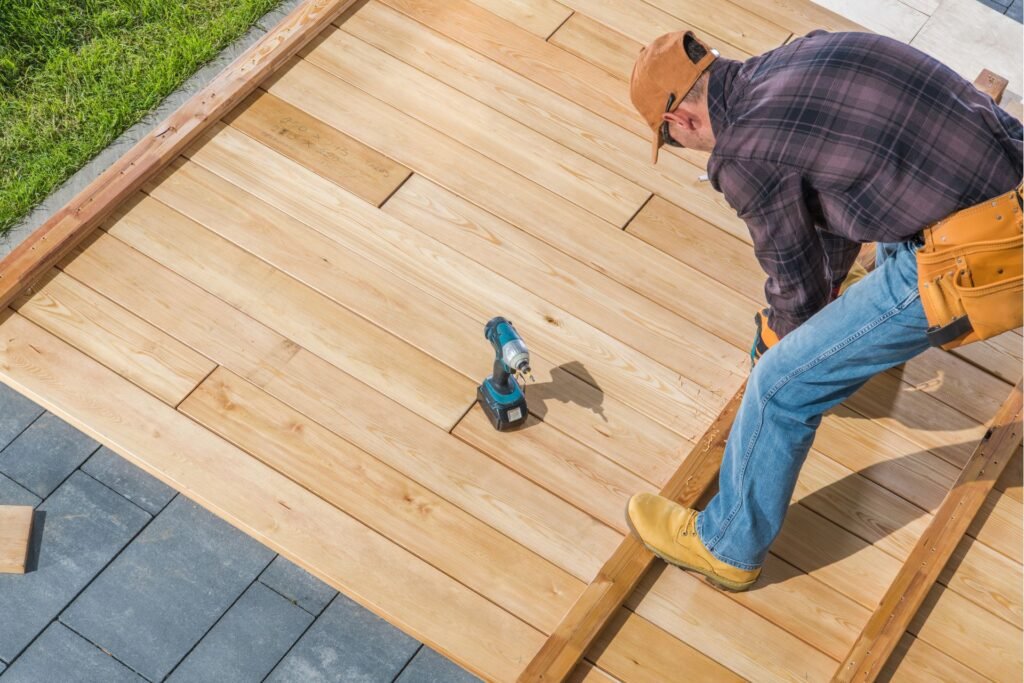
Real-Life Case Studies
When considering building a deck, it’s invaluable to look at real-life examples to understand the costs, challenges, and outcomes involved. Here, we’ll explore three distinct case studies, each representing a different deck size and complexity. These examples will help you gain insight into what you might expect when embarking on your own decking project.
Case Study 1: Small Urban Deck
Overview of a Small Urban Deck Project
In this first case study, we delve into the creation of a small urban deck designed to maximize the use of limited outdoor space in a bustling city environment. This project was undertaken by a young couple looking to enhance their small backyard, creating a cozy outdoor retreat for relaxation and entertaining.
Cost Breakdown and Outcomes
- Planning and Design: $500
- Permits and Inspections: $300
- Materials (Pressure-Treated Wood): $1,200
- Labor Costs: $2,000
- Miscellaneous (Fasteners, Sealants, etc.): $200
Total Cost: $4,200
The small urban deck project was completed within three weeks, transforming a previously unused backyard into a charming and functional space. The couple was thrilled with the outcome, noting that the deck provided an additional living area where they could enjoy meals, host friends, and unwind after a long day. The compact yet efficient design made the most of their limited space, proving that even small decks can have a big impact.
Case Study 2: Mid-Sized Family Deck
Overview of a Mid-Sized Deck for a Family Home
Next, we examine a mid-sized deck project for a suburban family home. This deck was built to serve as a versatile outdoor living space, suitable for family gatherings, barbecues, and children’s playtime. The family aimed for a balance between aesthetic appeal and practical functionality.
Cost Breakdown and Outcomes
- Planning and Design: $1,000
- Permits and Inspections: $500
- Materials (Composite Decking): $4,500
- Labor Costs: $6,000
- Miscellaneous (Railings, Lighting, etc.): $1,000
Total Cost: $13,000
The mid-sized family deck was completed in just over a month, featuring a mix of open and covered areas, built-in seating, and safety railings. The use of composite decking ensured a low-maintenance solution that would withstand heavy use by children and pets. The family reported a significant improvement in their quality of life, as the deck became the focal point of their outdoor activities, from weekend barbecues to evening relaxation.
Case Study 3: Large Custom Deck
Overview of a Large, Custom-Designed Deck Project
Lastly, we explore a large, custom-designed deck project for a sprawling rural property. This ambitious project was designed to integrate seamlessly with the natural landscape, offering multiple levels, built-in features, and luxurious finishes. The homeowners sought a deck that would serve as an extension of their home, providing ample space for entertaining large groups and enjoying panoramic views.
Cost Breakdown and Outcomes
- Planning and Design: $3,000
- Permits and Inspections: $1,000
- Materials (High-End Hardwood): $15,000
- Labor Costs: $20,000
- Miscellaneous (Outdoor Kitchen, Hot Tub, etc.): $6,000
Total Cost: $45,000
The large custom deck project took approximately three months to complete, resulting in a breathtaking outdoor space that blended luxury and functionality. Key features included an outdoor kitchen, a hot tub area, and multiple seating zones. The homeowners were ecstatic with the final product, noting that the deck became their go-to spot for everything from quiet morning coffees to lavish evening parties. The investment significantly boosted the property’s value and the family’s enjoyment of their home.
These case studies highlight the diverse possibilities when it comes to decking projects, demonstrating that no matter the size or budget, a well-planned deck can greatly enhance your outdoor living experience. From small urban retreats to expansive custom designs, each project underscores the importance of thoughtful design, quality materials, and skilled labor in achieving outstanding results.
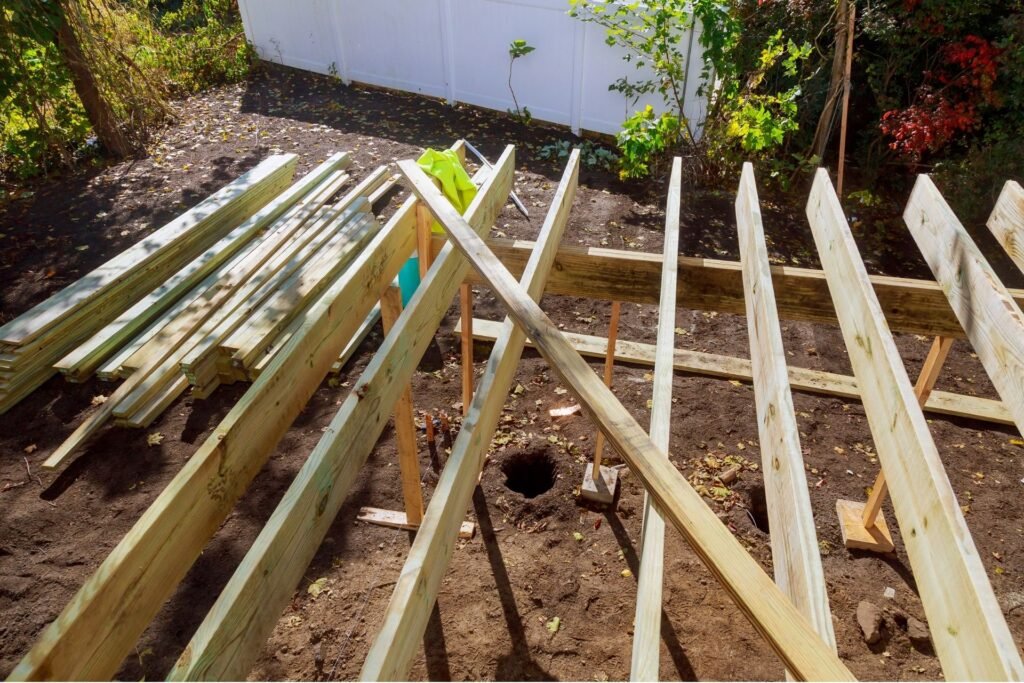
FAQs: About Deck Cost NZ
What are the main factors influencing deck costs in New Zealand?
The main factors influencing deck costs in New Zealand include the materials used, the size and design of the deck, location and site preparation, and labour costs. These elements contribute to the overall expense and can vary significantly based on individual project requirements.
How much does timber decking cost in New Zealand?
Timber decking in New Zealand typically costs between $300 and $600 per square meter. The exact price can depend on the type of timber used, such as Pine, Kwila, or Macrocarpa, each with its own cost range and durability features.
What is the cost range for composite decking in New Zealand?
Composite decking in New Zealand usually ranges from $350 to $700 per square meter. Composite materials are popular due to their low maintenance and long-lasting properties, making them a viable option despite the higher upfront cost.
How does the size of a deck impact the overall cost?
The size of the deck directly impacts the overall cost. Larger decks require more materials and labor, increasing the total expense. Additionally, larger decks may necessitate more extensive site preparation and foundation work.
Are there any additional costs to consider when building a deck?
Yes, there are several additional costs to consider, including permits and regulations, deck accessories (such as railings, steps, and lighting), and ongoing maintenance. These factors can add to the initial construction costs and should be factored into the budget.
Can I save money by building my deck myself?
Building your deck yourself can save on labor costs, but it’s essential to have the necessary skills and tools. DIY projects can be cost-effective, but hiring professionals ensures the deck is built to code and can prevent costly mistakes.
What are the benefits of hiring a professional deck builder?
Hiring a professional deck builder ensures that the deck is constructed correctly, safely, and to code. Professionals bring expertise, tools, and experience, which can save time and reduce the risk of errors that could lead to increased costs or safety issues.
How much does it cost to obtain a permit for building a deck in New Zealand?
The cost of obtaining a permit for building a deck in New Zealand varies by region and the complexity of the project. On average, permits can range from $200 to $500. It’s essential to check with local authorities for specific requirements and costs.
What are some cost-saving tips when building a deck?
Some cost-saving tips include choosing cost-effective materials, opting for a simple design, doing some of the work yourself if you have the skills, and taking advantage of seasonal discounts and promotions on materials and labor.
How often do I need to maintain my deck, and what are the costs involved?
The frequency and cost of maintaining your deck depend on the material used. Timber decks typically require annual maintenance, such as staining or sealing, which can cost between $100 and $300. Composite and PVC decks require less maintenance, usually only occasional cleaning, which is less costly. Regular maintenance helps extend the lifespan of your deck and keep it looking its best.
Conclusion
In conclusion, we’ve covered a range of essential points throughout this blog, offering valuable insights into the topic at hand. We’ve emphasized the importance of evaluating your unique needs and budget to make informed decisions. We encourage you to take the time to thoroughly assess what works best for your specific situation. Additionally, we invite you to join the conversation by sharing your experiences or posing any further questions in the comments section below. Your input is invaluable, and we look forward to hearing from you.
About the Author:
Mike Veail is a recognized digital marketing expert with over 6 years of experience in helping tradespeople and small businesses thrive online. A former quantity surveyor, Mike combines deep industry knowledge with hands-on expertise in SEO and Google Ads. His marketing strategies are tailored to the specific needs of the trades sector, helping businesses increase visibility and generate more leads through proven, ethical methods.
Mike has successfully partnered with numerous companies, establishing a track record of delivering measurable results. His work has been featured across various platforms that showcase his expertise in lead generation and online marketing for the trades sector.
Learn more about Mike's experience and services at https://theleadguy.online or follow him on social media:

